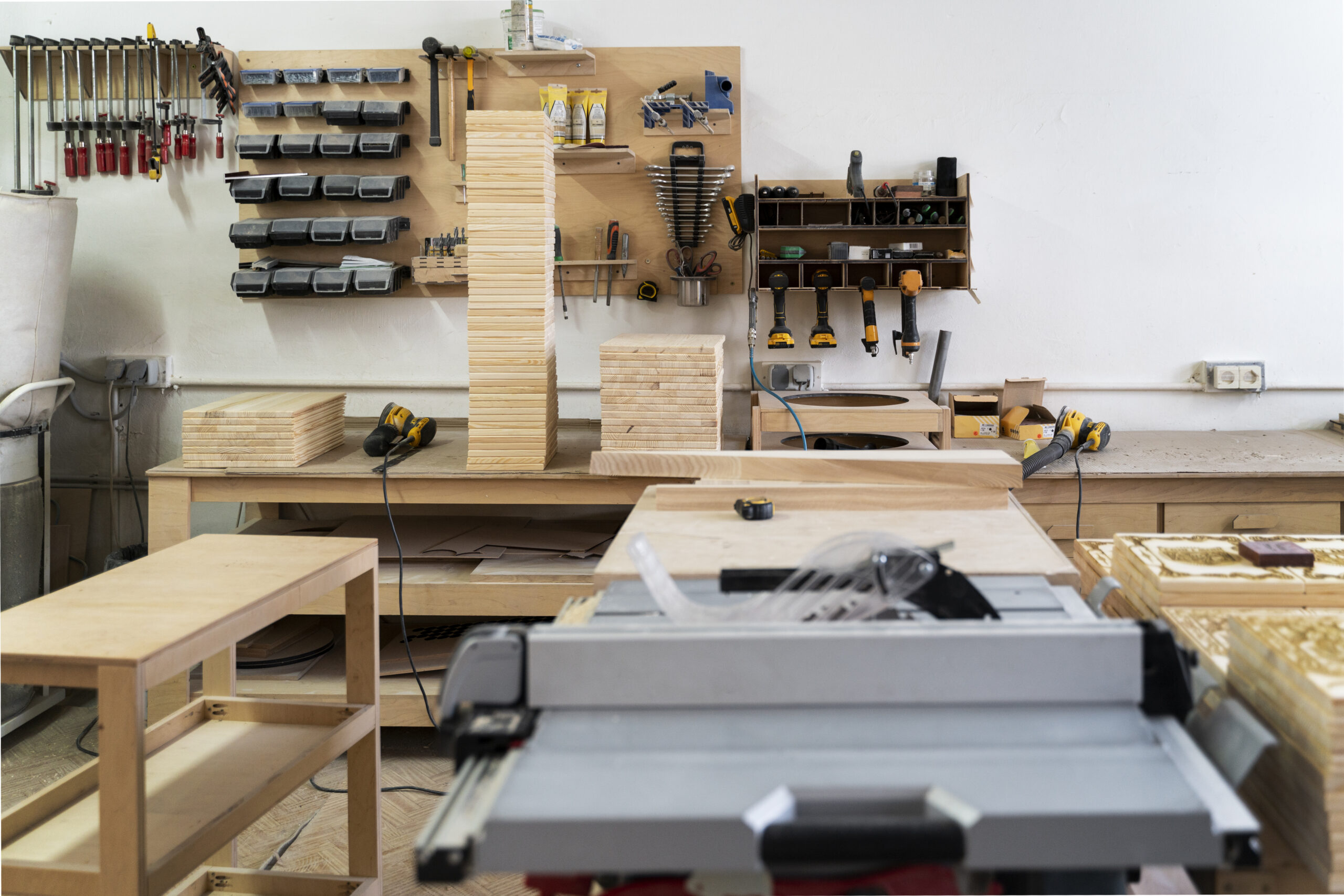Understanding Furniture Wax
Understanding Furniture Wax
Furniture wax is a staple in maintaining and enhancing the beauty of wooden furniture. But what exactly is it, and how does it work? Here, we’ll explore the different types of furniture wax, their uses, and application methods.
Types of Furniture Wax
There are several types of furniture wax, each with its unique properties. The most common ones include beeswax, carnauba wax, and paraffin wax.
- Beeswax: This natural wax is derived from bees and is known for its ability to nourish and protect wood. It provides a soft, warm finish and is easy to apply.
- Carnauba Wax: Sourced from the leaves of the Brazilian carnauba palm, this wax is harder than beeswax. It gives a high-gloss finish and superior durability.
- Paraffin Wax: A petroleum-based wax that is less common but still used. It offers a quick and easy shine but doesn’t provide the same level of protection as natural waxes.
Benefits of Using Furniture Wax
Using furniture wax brings numerous benefits. It enhances the aesthetic appeal of the wood by deepening its color and adding a lustrous shine. Wax acts as a protective barrier, shielding the wood from moisture, dust, and minor scratches. Moreover, regular waxing can extend the lifespan of the furniture.
Application Methods
Applying furniture wax is straightforward. Here’s a simple step-by-step guide:
- Preparation: Clean the furniture thoroughly. Remove all dust, dirt, and previous wax if necessary.
- Apply the Wax: Use a cloth or sponge to apply a thin layer of wax. Work in small sections, using a circular motion.
- Let it Dry: Allow the wax to dry for the recommended time, usually between 10-30 minutes.
- Buff the Surface: Once dry, buff the surface with a clean, dry cloth until you achieve the desired shine.
Tools Needed
Having the right tools makes the process easier and more effective. Here are the essentials:
- Cleaning Cloths: Microfiber cloths are excellent for removing dust and dirt.
- Wax Applicator: A soft cloth or sponge works well for applying wax.
- Buffing Cloth: A separate clean, dry cloth is needed for buffing the waxed surface.
- Putty Knife: Useful for removing old wax, if present.
How Often to Wax Furniture
The frequency of waxing depends on the type of wood, the finish, and how often the furniture is used. However, a general rule is to wax high-traffic pieces like dining tables and coffee tables once every six months. Less frequently used furniture can be waxed once a year.
Common Mistakes to Avoid
Some mistakes can hinder the effectiveness of furniture wax. Avoid these common pitfalls:
- Over-waxing: Too much wax can build up, leaving a sticky residue.
- Using the Wrong Wax: Ensure you are using a wax suitable for your furniture type.
- Skipping Cleaning: Applying wax on a dirty surface traps dirt underneath, leading to a dull finish.
- Not Buffing: Failing to buff the wax properly can result in a hazy appearance.
Combining Wax with Other Finishes
Furniture wax can be used alongside other finishes like oils and varnishes. Using a combination can provide enhanced protection and aesthetic qualities. For example, applying wax over a varnished surface adds an extra layer of durability while maintaining the sheen.
Environmental Considerations
Choosing the right type of furniture wax can also be an environmentally friendly option. Natural waxes like beeswax and carnauba wax are biodegradable and free from harsh chemicals found in synthetic alternatives.
Safety Precautions
While using furniture wax, it’s essential to take some safety precautions. Work in a well-ventilated area to avoid inhaling fumes. Store waxes in a cool, dry place, away from heat sources, to prevent them from melting.
Reviving Old Furniture
Furniture wax is an excellent tool for reviving old furniture. It restores the vibrancy of wood and can even conceal small scratches and blemishes. A thorough cleaning followed by waxing can breathe new life into aged pieces.
DIY Furniture Wax
For those interested in DIY, making your own furniture wax is simple. A basic recipe involves melting equal parts of beeswax and mineral oil. Once melted and mixed, allow it to cool and solidify. The result is a natural, homemade wax ready for use.
Choosing the Right Product
When selecting a furniture wax, consider the type of wood, the desired finish, and any potential sensitivities to ingredients. Reading product labels and customer reviews can also aid in making an informed decision.
Specialty Waxes
There are specialty waxes designed for specific purposes. For example, some waxes contain added pigments to enhance or color the wood. Others might include additional oils for extra nourishment and shine.
Waxing Painted Furniture
Waxing isn’t just for natural wood. Painted furniture can benefit from waxing as well. It adds a layer of protection to the paint and can give a subtle sheen that enhances the color. However, it’s crucial to ensure the paint is fully cured before applying wax.
Maintaining Waxed Furniture
Maintaining waxed furniture is simple. Regular dusting with a soft cloth is usually sufficient. For deeper cleaning, use a damp cloth, taking care not to saturate the wood. Reapply wax as needed to keep the furniture looking its best.
Furniture Wax vs. Furniture Polish
While both furniture wax and polish are used to enhance wood’s appearance, they serve different purposes. Polish is designed to clean and add a temporary shine. In contrast, wax provides a longer-lasting finish and offers more protection. Using both in conjunction can yield optimal results.
Restoring Antique Furniture
Antique furniture often requires special care. Wax is preferred over modern finishes as it is more in keeping with traditional methods. It preserves the character and integrity of antique pieces while offering protection and shine.
Waxing Outdoor Furniture
Wax isn’t just for indoor furniture. While it won’t provide full protection against the elements, it can still benefit certain types of outdoor furniture. Applying wax can help water resistance and extend the life of the wood. Regular maintenance will be needed due to exposure to weather.
Understanding Wax Durability
The durability of furniture wax depends on factors like the type of wax used, the frequency of use, and exposure to environmental elements. Harder waxes like carnauba offer longer-lasting protection compared to softer waxes like beeswax. Regular assessments and reapplications will help maintain optimal durability.
Aesthetic Appeal of Waxed Furniture
Furniture wax doesn’t just protect; it also enhances the aesthetic appeal of wood. Wax can bring out the natural grain and depth of color, giving the furniture a rich, polished appearance. This enhancement is subtle yet significant, adding to the overall beauty of the piece.
Waxing Different Wood Types
Different types of wood may react differently to wax. Hardwoods like oak and walnut usually handle wax well, showing a notable improvement in sheen and protection. Softer woods like pine might absorb more wax, requiring careful application to avoid oversaturation.
Environmental Conditions and Wax Performance
Environmental conditions can affect the performance of furniture wax. High humidity or temperature fluctuations may cause wax to break down faster. Storing wood furniture in stable conditions can prolong the effectiveness of the wax and the longevity of the furniture.
Professional Waxing Services
For those unsure about the DIY process, professional waxing services are available. Skilled professionals can ensure the correct products and techniques are used, providing a high-quality finish that enhances and protects the furniture.
Waxing Veneered Furniture
Veneered furniture can be waxed, but care must be taken. The wax can enhance the appearance and protection, but over-waxing may damage the thin veneer layer. Applying a minimal amount and buffing carefully can prevent issues.
Combining Wax with Repair Techniques
Wax can be combined with repair techniques for minor damage. Small scratches or dents can be filled with wax sticks that match the wood color. After filling, the area can be buffed to blend seamlessly with the surrounding surface.
Waxing Unfinished Wood
Unfinished wood can benefit from waxing, offering a more natural look compared to other finishes. The wax penetrates the wood, offering protection and a slight sheen without altering the natural appearance. Multiple coats may be needed to build up sufficient protection.
The Role of Wax in Wood Restoration
Wax plays a crucial role in wood restoration projects. It is often the final step after cleaning and repairing, providing a protective and visually appealing coating. The use of wax ensures that the restored piece maintains its beauty and functionality for years to come.
Innovations in Furniture Wax
Innovations in furniture wax include the development of waxes that are easier to apply and more environmentally friendly. New formulations minimize drying time and enhance durability. These innovations make it easier for anyone to achieve professional-looking results at home.
Furniture wax remains a vital component in maintaining and beautifying wood furniture. Understanding its types, application methods, and benefits ensures that you can make informed choices to protect and enhance your valued pieces.

